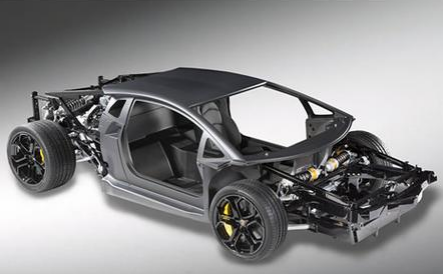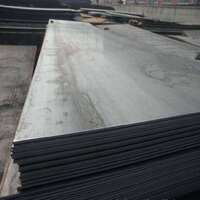1. Introduction
Just 24 hours ago, a major architectural firm in Portland unveiled a new residential project featuring a striking corten steel facade that’s already sparking conversations across design forums and social media. This surge in interest highlights a growing trend: homeowners are increasingly turning to metal clad exteriors for their durability, modern aesthetic, and low maintenance. Whether you’re building a metal clad house from scratch or re-siding an existing structure, knowing how to properly install and care for your metal cladding is key to maximizing its lifespan and visual appeal.

Metal clad isn’t just one material—it’s a category that includes everything from corrugated steel facade panels to sleek vertical standing seam metal siding, zinc clad dormers, and even copper siding. Understanding the options and best practices will save you time, money, and headaches down the road.
2. Choosing the Right Metal Clad Material
Not all clad metals are created equal. Your climate, budget, and design goals should guide your choice.
- Corten steel siding offers a rustic, weathered look and develops a protective rust layer over time—but be mindful of runoff staining nearby surfaces. Corten siding cost typically ranges from $8 to $15 per square foot.
- Zinc metal siding and zinc clad roof systems provide a sleek, modern finish with excellent corrosion resistance. A zinc facade can last 80+ years with minimal upkeep.
- Aluminum clad steel or aluminum clad sheet is lightweight, affordable, and ideal for coastal areas due to its salt resistance.
- For a premium look, consider copper siding or a titanium clad accent panel—though these come at a higher price point.
Also consider insulated options like metal clad insulation panels if energy efficiency is a priority. And don’t confuse structural materials like 1/4 steel plate or stainless steel plate with exterior cladding—they serve different purposes.
3. Preparing the Wall Surface

Before installing any metal clad wall system, ensure your substrate is clean, dry, and structurally sound.
Remove old siding, repair any rot or water damage, and install a high-quality weather-resistive barrier (WRB) like housewrap. This step is critical—even the best metal clad building won’t perform well over a compromised wall.
Add furring strips if you’re using a rainscreen system. This creates an air gap behind the cladding, allowing moisture to escape and improving thermal performance. This is especially important for steel facade or corrugated steel facade installations in humid climates.
4. Installing Metal Clad Siding: Step-by-Step
Follow these steps for a professional-looking finish:
- Start at the bottom: Install a starter strip or drip edge to direct water away from the wall base.
- Work upward: For vertical standing seam metal siding or standing seam facade panels, align panels carefully and use hidden fasteners to maintain a clean look. Systems like PAC Clad standing seam or Colorbond standing seam often include proprietary clips—use them as directed.
- Mind the gaps: Leave expansion gaps (usually 1/8” to 1/4”) at joints and corners to accommodate thermal movement. Aluminum and steel expand significantly in summer heat.
- Seal penetrations: Use compatible sealants around windows, doors, and utility lines. For electrical, metal clad electrical wire can be safely run through walls—but always follow local codes.
- Finish edges: Use PAC Clad coping, column covers, or trim pieces to cap corners and transitions. These details prevent water intrusion and boost curb appeal.

Pro tip: When cutting metal sheet, use aviation snips or a metal shear—not a standard saw—to avoid jagged edges and burrs.
5. Common Problems and How to Fix Them
Even the best metal clad siding can face issues if not maintained properly.
- Rust spots on steel: If you’re not using corten steel, rust indicates a breach in the coating. Sand the area, apply a rust-inhibiting primer, and repaint with a metal-compatible finish.
- Oil canning (wavy distortion): Often caused by over-tightening fasteners or improper panel support. Loosen fasteners slightly or add intermediate supports.
- Condensation behind cladding: Usually due to poor ventilation. Ensure your rainscreen cavity is open at top and bottom for airflow.
- Fading or chalking: UV exposure affects painted finishes over time. Choose PVDF-coated products (like many PAC Clad HWP options) for better color retention.
6. Maintenance Tips for Longevity
Metal clad requires far less upkeep than wood or vinyl—but it’s not zero maintenance.
Rinse your metal clad house annually with a garden hose to remove dust, pollen, and salt buildup. For tougher grime, use mild soap and a soft brush—never abrasive cleaners.
Inspect fasteners and seams every 2–3 years. Tighten loose screws and replace any corroded hardware.
If you have aluminum clad pipe insulation or aluminum clad stainless steel elements near your siding, check for galvanic corrosion where dissimilar metals touch. Use dielectric separators if needed.
7. Conclusion
Installing metal clad siding is a smart investment in both aesthetics and durability. Whether you opt for a bold corten steel plate look, a refined zinc clad roof, or classic exterior corrugated metal siding, following proper installation and maintenance practices ensures your home stays protected and beautiful for decades. With the right prep, materials, and attention to detail, your metal clad building will stand out—in all the right ways.
Our Website founded on October 17, 2012, is a high-tech enterprise committed to the research and development, production, processing, sales and technical services of ceramic relative materials such as How. Our products includes but not limited to Boron Carbide Ceramic Products, Boron Nitride Ceramic Products, Silicon Carbide Ceramic Products, Silicon Nitride Ceramic Products, Zirconium Dioxide Ceramic Products, etc. If you are interested, please feel free to contact us.
